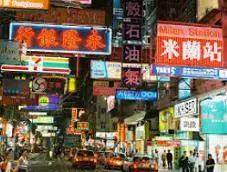 It is possible to recognize numerous types of contamination . Some persist over time and are cumulative, while others develop in the moment and can be reversed immediately. Environmental pollution , air pollution , soil pollution , water pollution and noise pollution are some of the most common types of pollution.
It is possible to recognize numerous types of contamination . Some persist over time and are cumulative, while others develop in the moment and can be reversed immediately. Environmental pollution , air pollution , soil pollution , water pollution and noise pollution are some of the most common types of pollution.
On this occasion we are going to focus on visual pollution , which appears when the visualization of a landscape or the environment is made impossible by the overabundance of posters, antennas, cables and other non-architectural elements . This pollution is common in large cities, although it can also arise in small towns and rural areas.
If dozens of advertising signs and electricity poles are installed on a street, and also mobile phone antennas (cell phones) and chimneys can be noticed in buildings, visual pollution is generated. People can no longer clearly observe different details of the environment because their vision is hindered by these polluting agents. The situation can cause anxiety , excitement and a feeling of chaos .
In short, we can say that visual pollution occurs when humans install too many artificial structures in a certain place, to the point of making it difficult to correctly perceive the natural landscape . This begins, needless to say, with the creation of settlements such as towns and cities, the starting point of the process of alteration of the planet that characterizes us so much.
Although some people seem to live comfortably in an environment where visual pollution reigns, others experience various negative symptoms, in addition to those discussed above, such as headache, stress , bad mood, attention problems, alterations of the nervous system and a marked deficit of efficiency in their daily tasks .
When we saturate a landscape with colors and elements, we not only make visualization and spatial orientation difficult, but we generate in the individuals who must move in it a much greater mental effort to decode their environment , and it is then that the wear and tear that leads us begins. to the health disorders mentioned above.
While people with vision problems resort to glasses to read small texts, for example, there is no resource that helps us reduce the impact that the saturation caused by visual pollution has on our brain.
 Visual pollution can also constitute a risk for motorists. When visual stimuli are excessive and even block traffic signals, drivers may not be able to focus their attention on the road and cause accidents .
Visual pollution can also constitute a risk for motorists. When visual stimuli are excessive and even block traffic signals, drivers may not be able to focus their attention on the road and cause accidents .
Currently there are initiatives that seek to reduce visual pollution with the aim of organizing public space and highlighting urban or natural attractions . Among the most common measures are the removal of advertising posters and the prohibition of establishing new non-architectural structures.
It is not necessary to be an expert on the subject to know that today's life is characterized by an excess of information and that much of this is presented in the form of advertising. Although we spend a large part of our day on the Internet, we are far from a reality in which the material world has lost importance or, from the point of view of advertisers, effectiveness. For this reason, streets continue to be a suitable place to place advertising signs.
It is important to note that there are urban planning regulations that have been specifically designed to avoid the placement of dangerous or overloaded elements on public roads, and it is the task of local governments to follow up pertinently to ensure that no one violates them.
